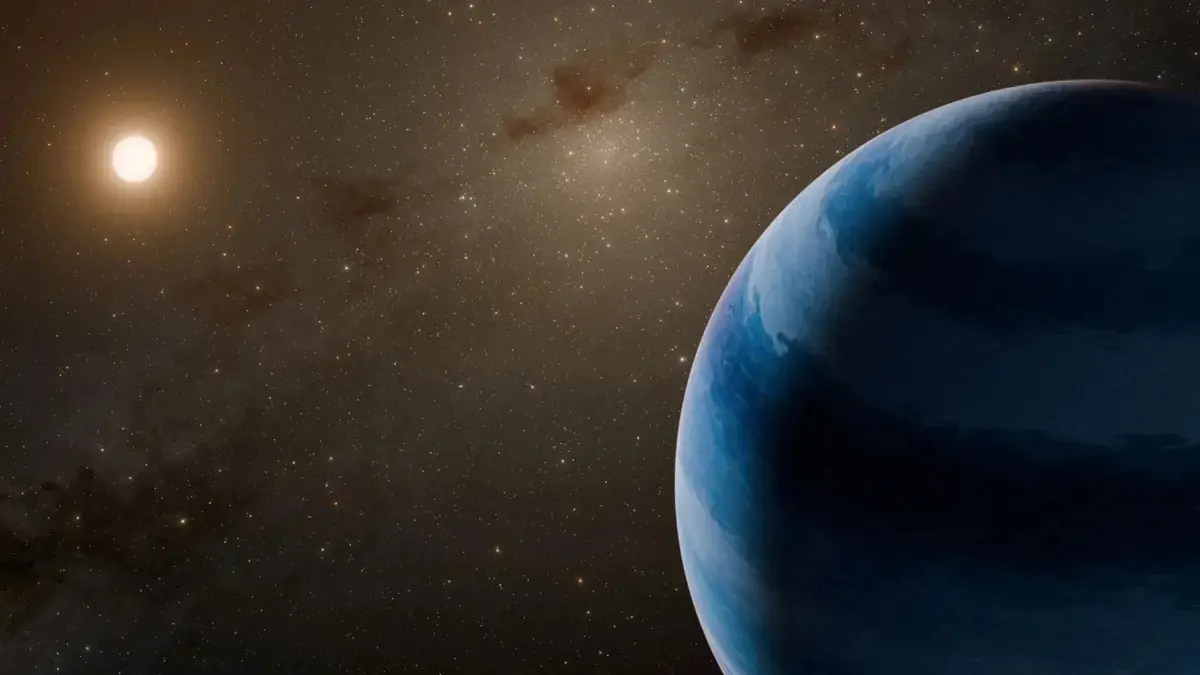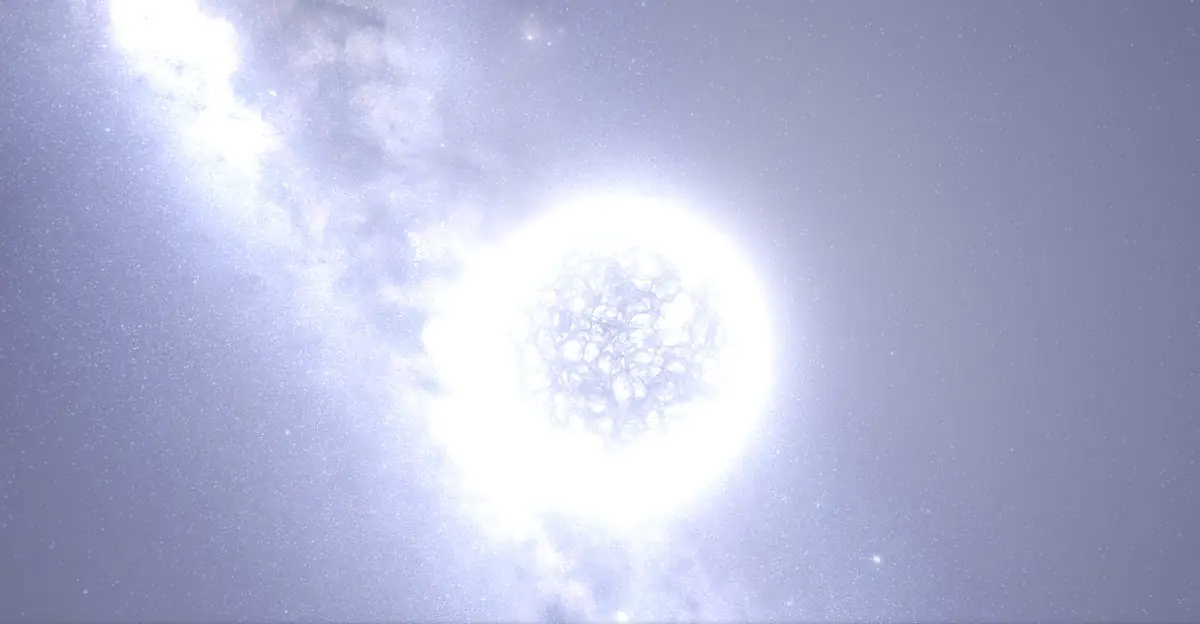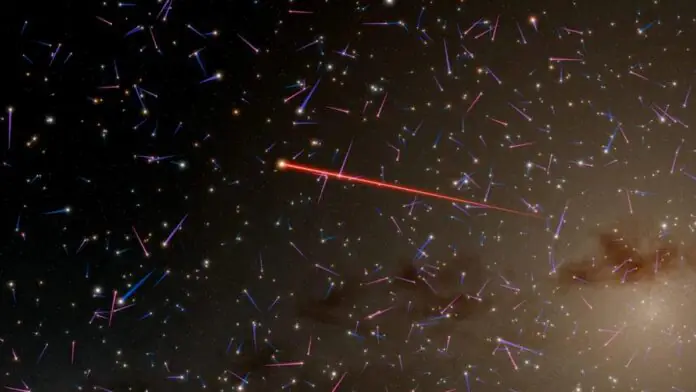© ROOT-NATION.com - Use of content is permitted with a backlink.
Scientists have spotted a tiny star, possibly towing an exoplanet, traveling through the Milky Way at about 500 times the speed of a bullet. This would make it the fastest planetary system ever observed. However, there remains some uncertainty regarding the true nature of the high-speed object and its companion.
In 2011, researchers indirectly detected a pair of mysterious objects in the Milky Way using a phenomenon known as “microlensing” — a low-level form of gravitational lensing where light is “bent” as it passes through space-time distorted by massive objects. Although the team did not directly observe or measure the pair, gravitational anomalies indicated that the larger object was about 2,300 times more massive than the smaller one. One leading theory explaining this observation suggested that the pair consists of a small star orbiting a large exoplanet, located somewhere in the “galactic bulge” of stars near the center of the Milky Way.

In a new study published in The Astronomical Journal, a different group of researchers has identified a new star that may be the larger object from this mysterious pair. The star has a mass roughly one-fifth of the Sun’s and is located about 24,000 light-years from Earth in the depths of the galaxy. Based on its position relative to the 2011 observation, the researchers calculated that the star is moving at a speed of at least 1.9 million km/h.
During the new observation, no exoplanet was detected, which is not surprising, as detecting an exoplanet orbiting a star may require years of continuous observation. However, based on the size of the larger object, the researchers were able to predict the mass of the potential exoplanet and its distance from the host star.

“We believe this is a so-called super-Neptune world [about 30 times more massive than our planet], orbiting a low-mass star at a distance that would lie between the orbits of Venus and Earth if it were in our solar system,” said lead author Sean Terry, a postdoctoral researcher from the University of Maryland and NASA’s Goddard Space Flight Center, in a statement. “If that’s the case, it would be the first planet ever found orbiting a hyper-velocity star. Given the star’s small size, the planet will almost certainly be inhospitable to life.”
At this speed, the potential planetary system would be traveling through the Milky Way about twice as fast as our Solar System. However, it could be moving even faster, as the new observations do not take into account its direction relative to our system, the researchers note.

If the stellar candidate is moving at speeds exceeding 2.1 million km/h, it would have enough velocity to eventually leave the Milky Way, potentially dragging its planetary companion into intergalactic space, according to a statement from NASA. However, the team remains uncertain about the true size and speed of the objects, or even what they actually are.
Even if the larger object from 2011 is a star, there are no guarantees that it’s the same one observed in the new study, or that it is moving at the speed calculated by the researchers, as they have not yet directly observed its motion.
“To be sure that the newly identified star is part of the system that caused the 2011 signal, we would like to take another look in a year to see if it’s moving the right distance and in the right direction to confirm it came from the point where we detected the signal,” said study co-author David Bennett, senior scientist at the University of Maryland, College Park, and NASA Goddard, in a statement.

There is also an alternative explanation for the 2011 observation: the pair of objects might actually be a massive rogue exoplanet orbiting a large exomoons. In this case, the duo would also be located much closer to Earth.
If future observations show that the star is not moving, “it would mean that the rogue planet and exomoon model is more likely,” the researchers note.
Read also:
- First French Mirage 2000 Fighter Jets Arrived in Ukraine
- German Company Helsing to Supply Ukraine with 6,000 HX-2 Strike Drones


